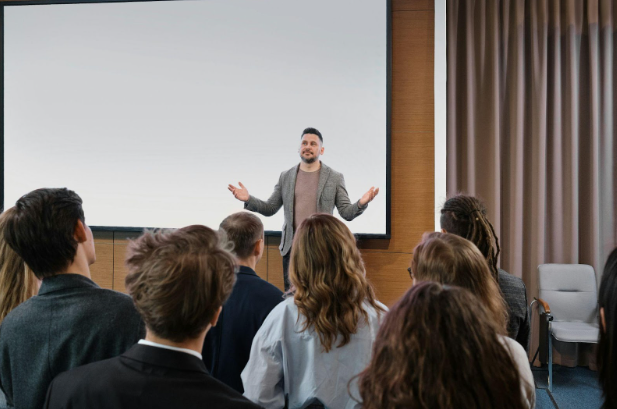Schools flourish when they foster strong relationships with their surrounding communities. These partnerships provide students with valuable opportunities such as mentorship, hands-on experiences, and career exposure, helping bridge the gap between education and real-world application. As noted by Mark Balch, when local businesses, organizations, and educators collaborate, they create a network of support that enriches learning and strengthens the community as a whole.
However, building and maintaining these partnerships requires intentional effort, clear communication, and adaptability to changing needs. By aligning resources with student development, overcoming collaboration challenges, and implementing impactful programs, schools can create lasting connections that benefit students and the broader community.
Table of Contents
Why Strong Community Partnerships Matter
Schools thrive when they build strong relationships with local businesses, organizations, and leaders. These connections create opportunities that go beyond the classroom, providing students with hands-on experiences, mentorship, and career exposure. When schools and communities work together, students gain access to valuable resources that enhance learning and personal growth.
Collaboration between educators and local leaders also strengthens the broader community. Schools serve as central hubs where families, businesses, and nonprofits can unite to support student success. Partnerships lead to new programs, funding opportunities, and initiatives that benefit students and residents. A town with an engaged school system fosters civic pride and long-term investment in education.
Many districts have seen measurable improvements in student achievement and engagement through these collaborations. When businesses provide internships or mentorships, students develop real-world skills that prepare them for higher education or the workforce. These initiatives not only help students but also create a stronger, more connected community that values education as a shared responsibility.
Mark Balch’s Strategy for Meaningful Engagement
Building strong partnerships requires more than just introductions; it demands consistent engagement and shared objectives. Mark Balch prioritizes open communication, ensuring that both schools and local leaders understand each other’s goals. By fostering relationships based on trust and mutual benefit, he creates collaborations that are not only effective but also long-lasting.
One approach he emphasizes is aligning community resources with student needs. Whether it’s a local business offering job shadowing opportunities or a nonprofit supporting after-school programs, these partnerships are designed to provide real value. Schools become more than just educational institutions—they transform into community pillars that connect people, ideas, and opportunities.
Leaders who work with Balch often find that their involvement extends beyond a single initiative. When businesses, government officials, and educators collaborate regularly, they create a network of support that continuously evolves. These connections help schools adapt to changing needs while ensuring that students receive the guidance and exposure necessary for future success.
Programs That Strengthen School-Community Bonds
Successful partnerships often lead to practical programs that directly benefit students. Mentorship initiatives give young people direct access to professionals who can guide them in career exploration and personal growth. Internships allow students to experience real workplace environments, helping bridge the gap between academics and future employment. Volunteer-driven projects, such as tutoring or community service, reinforce the idea that education extends beyond textbooks.
Some schools have seen attendance and engagement improve when students feel connected to their community. When local leaders take an active role in education, students recognize that their success matters beyond school walls. This sense of belonging encourages motivation, ambition, and a deeper commitment to learning.
Programs that integrate businesses, nonprofits, and educational institutions often have a lasting effect. A single mentorship initiative may inspire students to pursue careers they had never considered, while hands-on internships provide invaluable skills. These efforts create a ripple effect, strengthening both individual futures and the community as a whole.
Overcoming Challenges in Collaboration
Establishing partnerships between schools and local leaders is not without obstacles. Differences in priorities, limited resources, and logistical concerns can make collaboration difficult. Schools may struggle to align their educational goals with the interests of businesses or community groups, while organizations might be unsure how to contribute effectively. Overcoming these barriers requires patience, clear communication, and a shared commitment to student success.
One way to build stronger connections is by creating structured agreements that outline expectations for all parties involved. When schools and community partners have a clear understanding of their roles, it prevents misunderstandings and ensures that initiatives stay on track. Leaders who actively engage in ongoing dialogue are more likely to find solutions that keep partnerships thriving. Consistent check-ins and feedback loops help both sides adjust plans as needed, maintaining momentum and effectiveness.
Long-term success depends on adaptability. As community needs change, partnerships must adapt to remain relevant. Schools that regularly assess and refine their collaborations are better equipped to address new challenges while maintaining meaningful engagement with local leaders. This flexibility ensures that partnerships continue to serve students in ways that make a lasting impact.
Steps to Build Stronger Connections
Establishing meaningful relationships between schools and local leaders starts with outreach. Educators and community members must take the initiative to connect, whether through networking events, collaborative projects, or shared forums. Trust is built through consistent engagement, demonstrating that both sides are committed to making a difference.
Sustaining these partnerships requires active participation. Schools that invite businesses and organizations to take an ongoing role in student development create lasting bonds. Whether through mentorship, internships, or resource-sharing, consistent involvement ensures that collaborations remain relevant and impactful. Regularly updating stakeholders on student progress and program outcomes strengthens their commitment and encourages deeper investment.
The strongest school-community relationships are built on mutual benefit. When educators and local leaders see the value in working together, they are more likely to invest time and resources into long-term initiatives. By fostering these connections, schools create an atmosphere where students, businesses, and the community grow together.

